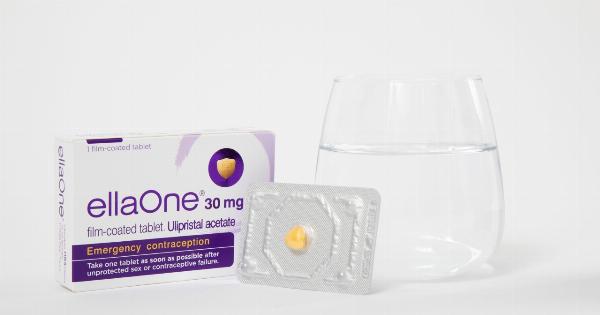Contraception has come a long way since the advent of the birth control pill in the 1960s. Over the years, women have had access to various methods of contraception, from condoms to intrauterine devices (IUDs) to hormonal injections.
One such innovative method that has gained popularity in recent years is the vaginal ring.
What is a Vaginal Ring?
A vaginal ring, also known as a contraceptive ring or a nuvaring, is a small, flexible ring that is inserted into the vagina to prevent pregnancy.
It is made of a combination of hormones, usually estrogen and progestin, which are released slowly and steadily into the bloodstream. The hormones work by suppressing ovulation, thickening the cervical mucus to prevent sperm from reaching the egg, and thinning the lining of the uterus to decrease the chances of implantation.
How Does the Vaginal Ring Work?
The vaginal ring is a convenient and effective method of contraception for women who are looking for a long-term solution. Once inserted, the ring is left in place for three weeks, releasing a continuous dose of hormones.
After three weeks, the ring is removed, and a new one is inserted after a week-long break. This cycle allows for regular menstrual bleeding to occur.
Benefits of Using a Vaginal Ring
Using a vaginal ring as a contraceptive method comes with several advantages:.
- Convenience: Once inserted, the ring stays in place for three weeks, eliminating the need to remember to take a daily pill or use other forms of contraception.
- Effectiveness: When used correctly, the vaginal ring is over 90% effective in preventing pregnancy.
- Regulation of Menstrual Cycles: The vaginal ring helps regulate menstrual cycles, making them lighter and more predictable.
- Decreased Menstrual Symptoms: Many women find that using the vaginal ring leads to a decrease in menstrual symptoms such as cramps and mood swings.
- Reversibility: Unlike certain long-acting contraceptives such as IUDs, the effects of the vaginal ring wear off quickly after discontinuation.
How to Obtain a Vaginal Ring
In order to obtain a vaginal ring, a prescription is required from a healthcare provider. During a visit, the healthcare provider will assess the woman’s overall health and ensure that the vaginal ring is a safe and suitable contraceptive option.
The prescription can then be filled at a pharmacy, and detailed instructions on how to use the vaginal ring will be provided.
Potential Side Effects
While the vaginal ring is generally well-tolerated, some women may experience side effects. These can include:.
- Nausea
- Headaches
- Breast tenderness
- Changes in libido
- Vaginal discharge or irritation
Most side effects are mild and tend to resolve on their own after a few months of use. However, if side effects persist or worsen, it is important to consult with a healthcare provider to explore alternative contraceptive options.
Important Considerations
Before deciding to use a vaginal ring, there are a few important considerations to keep in mind:.
- STI Prevention: The vaginal ring does not protect against sexually transmitted infections (STIs). Therefore, it is important to use additional barrier methods such as condoms to reduce the risk of STI transmission.
- Smoking: Women who smoke, especially those over the age of 35, are at an increased risk of certain health complications associated with hormonal contraceptives. It is crucial to discuss smoking habits with a healthcare provider before starting to use a vaginal ring.
- Effectiveness: The effectiveness of the vaginal ring can be compromised if it is not used correctly. It is important to carefully follow the instructions provided by the healthcare provider and to ensure that the ring is inserted and removed on time.
Conclusion
The vaginal ring has proven to be a game changer in the world of contraception. Its convenience, effectiveness, and ability to regulate menstrual cycles make it a popular choice among women.
However, it is important to consult with a healthcare provider to determine if the vaginal ring is the right contraceptive option for an individual’s specific needs and circumstances.






























